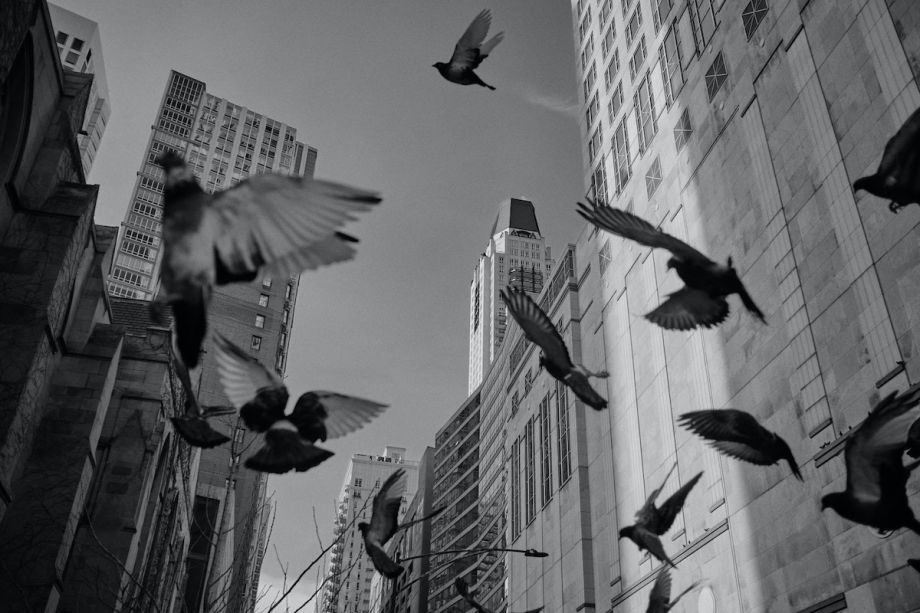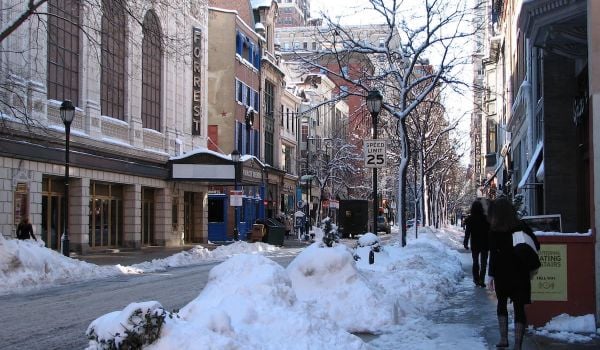Keith Russell was on his way to work in the late 1980’s when he “really started noticing” birds killed by what he believed to be collisions with buildings. At the time, he worked for the Academy of Natural Sciences of Philadelphia, the oldest natural sciences institution in the Western hemisphere, located in the heart of the city along the iconic Benjamin Franklin Parkway.
“I would come to work in the morning, and a lot of times I would see dead birds on the street,” says Russell, who brought the carcasses to Academy taxidermists for the institution’s dioramas.
In the years since, he has continued witnessing the often fatal result of building-bird collisions. But since joining Audubon Mid-Atlantic in 2006, Russell has been deeply involved in mitigating the problem, including through the creation of Lights Out Philly, a light pollution mitigation pledge.
Yet for over a decade, he and his team couldn’t get building managers to sign the pledge — until over 1,000 migratory birds struck downtown Philadelphia buildings in late 2020, stunning city residents. That crash was pivotal to the real start of the Lights Out program, says Russell, who is now Audubon Mid-Atlantic’s urban conservation program manager. At this point, roughly 100 Philadelphia buildings — 69 residential and 39 commercial — have signed on.
“[It’s] what I think pushed us to the point where these organizations said, ‘Okay, this is horrible — we’d be willing to turn off our lights and get involved in this program,’” he explains.
A “siren song” for birds
In highly illuminated areas, light pollution can cause migratory birds to divert from their intended aerial paths and into obstacle-filled urban centers, although local urban birds are harmed by light pollution, too, says Colleen Miller, a light pollution ecologist and Ph.D. candidate at Cornell University’s Lab of Ornithology. “Once they’re in the city, [birds] can get confused … and potentially hit windows,” she explains.
While light pollution initially draws birds into the city, it’s the combined effect of an abundance of lights and the resulting glare of windows and other reflective glasses that makes it hard to safely navigate — if those surfaces haven’t been modified with bird deterrent films or treatments, that is. Together, these factors lead to fatal crashes that can kill individual birds or hundreds of members of a migrating flock, according to Karema Seliem, a LEED specialist at the U.S. Green Building Council with a background in bird collision deterrence and light pollution.
“The light pollution is the siren song, and the building is the siren herself,” quips Seliem.
Even without lights, reflections on glass cause birds to “think they can fly right through that clear glass,” Russell notes. To help reduce migratory bird strikes and deaths, programs in Pittsburgh, Houston and Greensboro, N.C., and other cities across the country have focused on light pollution to encourage residents, businesses and municipalities to shut off their lights during late-night hours during typical spring and fall migration periods.
The impact of the seemingly simple ask can be immense, some studies show. According to a 2021 study published in the Proceedings of the National Academy of Sciences, “decreasing lighted window area [to minimum levels historically recorded] could reduce bird mortality by ∼60%” at a large Chicago building. The study drew on two decades worth of data on bird collisions, weather and migration patterns to form its conclusion.
But that sort of data wasn’t available back when Russell and his team first tried to get the Lights Out Philly program off the ground. Next City reached out to property managers listed as participants in Lights Out Philly but wasn’t able to schedule interviews with any.
“When we first tried to get [buy-in for] Lights Out in 2006, [building managers] just weren’t convinced that this was a problem,” he says, noting the lack of direct evidence at the time tying the buildings to the issue.
The Audubon team did end up collecting relevant information in a monitoring study conducted between 2008 and 2011 in collaboration with other major Philadelphia organizations, including the Academy of Natural Sciences. But that data has never been released, and Russell says no one involved showed that data to the initially skeptical property owners.
“We were convinced after the monitoring surveys we did that it wasn’t lights that were the main problem, it was glass,” recalls Russell. “We felt we needed to raise awareness about the glass issue more than the light issue…That was really where the action was, so we never went back” until after the 2020 mass bird collision, instead focusing on encouraging the use of new and existing bird deterrent films or treatments.
“Absolve themselves of guilt”
Light pollution experts say that a lack of education might not be the only reason property managers choose to not participate in a light pollution-mitigation program.
Seliem says that the documentation burden of proving that a building has actually met the qualifications of a pledge, program or certification can feel overwhelming for some property managers. For the LEED green building ratings system, for example, it’s not good enough for a building to simply claim to have met the requirements for light pollution reduction or bird collision deterrence just because they turned off the lights.
“You can’t know that unless you have documentation to prove it,” she explains. “We have very technical requirements and thresholds for you to meet certain metrics of glow and BUG rating,” referring to the values attributed to a light’s backlight, uplight and glare.
And companies may feel they can get a bigger bang for their buck (and mental energy) by completing other eligible projects. John Barentine, a light pollution consultant who has had discussions with commercial property owners about such measures, points out that LEED certification provides the same number of points for bicycle facilities in new construction as light pollution mitigation.
“You get the equivalent amount of credit for putting in bike racks as far as the certification goes,” he explains. “So why would you go to all this extra trouble if it’s just as easy to get equivalent credit doing something that’s a lot easier and that people might actually use?”
Another concern Barentine has heard is that “a dark building at night is a missed opportunity, in that it conveys a sense that there’s nothing going on there.”
“Some of these building owners want their buildings to be seen and noticed at night, even if the public doesn’t necessarily know who owns a building or what goes on there,” says Barentine. “And I’ve talked to some municipal officials about this who think, ‘If our downtown was all dark at night, it wouldn’t be an inviting place’” to develop a thriving overnight economy.
But at this point, Russell says, property managers may view the potential hassle of trying something new as outweighing the costs — financial or otherwise — of doing nothing at all. He points to the on-site staff, like maintenance workers and security personnel, who have to step over and clean up carcasses, in addition to any office workers who witness carcasses lining the window ledges and grounds of their workplaces.
“I think that because there are so many birds hitting so many buildings, and so many people are already aware of this, that a lot of them are looking for ways to absolve themselves of guilt over this issue,” suggests Russell. “I think that’s what is going to motivate people to participate.”
That guilt already seems to be paying off. Since the Lights Out Philly program began in earnest, Russell says anecdotal and preliminary evidence suggests fewer birds have collided with monitored buildings and died. Still, he’s hesitant to call the program a success, despite early findings indicating a 70% decline in bird collisions at one building on Philadelphia’s bustling Market Street.
The Chicago study “took like 20 years of data, and they were very careful to get a lot of data before they published major papers about this,” says Russell. “We’ve only been doing this for two years.”
“We’re trying to be cautious, but we’re also trying to be very clever in how we look at this … [we’re] focused on the places where we think we can make the case most cleanly,” he explains.

Bridget Reed Morawski mostly reports on and write about energy and environment topics, specifically sustainable design, food systems, climate change and environmental justice.
















